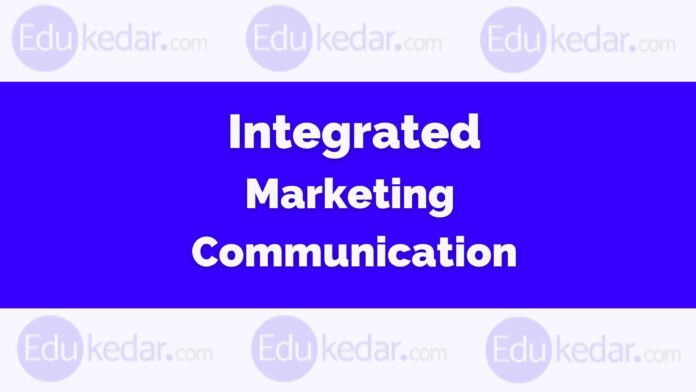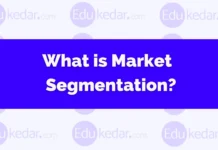Integrated Marketing Communication (IMC) is a strategic approach to marketing that involves integrating various communication channels and tools to deliver a consistent and compelling message to target audiences.
What is Integrated Marketing Communication?
Integrated Marketing Communication (IMC) is a strategic approach that involves coordinating and integrating various communication channels and tools to deliver a consistent and compelling message to target audiences.
The goal of IMC is to create a unified and seamless brand experience for consumers and to ensure that marketing messages are delivered in a coordinated and effective manner.
Integrated Marketing Communication Meaning
- Integrated marketing communication is a term used to describe a holistic approach to marketing communication.
- IMC means the integration of all promotional tools so that they work in harmony.
- In IMC all aspects of marketing communication work together to increase sales and achieve maximum cost-effectiveness.
Definition of Integrated Marketing Communication
A strategic marketing process specially designed to ensure that all messaging and communication strategies are unified across all channels and are centered around the customer.
A company’s promotional mix that includes advertising, Public Relations, Direct marketing, social media, and integrated marketing is called a marketing communication mix.
- IMC is the concept of marketing communications planning that recognizes the added value of a comprehensive plan that evaluates the strategic roles of a variety of communication disciplines and combines these disciplines to provide clarity, consistency, and maximum communications impact. – American Association of Advertising Agencies
- “The process of managing all sources of information about a product /service to which a customer or prospect is exposed and which, behaviorally, moves the customer toward sales and maintains customer loyalty.” – Schultz (1991)
- IMC is the concept under which a company carefully integrates and coordinates its many communication channels to deliver a clear, consistent, and compelling message about the organization and its message. – Kotler (1999)
- IMC is the concept and process of strategically managing audience-focused, channel-centered, and results-driven brand communication programs over time. – Kliatchko (2005)
- The strategic coordination of all messages and media by an organization in order to influence its perceived brand value collectively. – Keegan (1992)
Components of Integrated Marketing Communication
The Components or Elements of Integrated Marketing Communication (IMC) can vary depending on the specific needs and goals of the brand or organization, but generally include the following:
- Advertising
- Sales Promotion
- Personal Selling
- Direct Marketing
- Public Relations
- Digital Marketing
Advertising
This component involves paid communication through various media channels, such as print, broadcast, online, and outdoor advertising, with the goal of reaching a large audience and creating brand awareness.
Sales Promotion
This component involves short-term incentives, such as coupons, discounts, and contests, aimed at encouraging consumers to make a purchase or take a specific action.
Personal Selling
This component involves face-to-face communication between a sales representative and a potential customer, with the goal of building relationships, addressing concerns, and closing a sale.
Direct Marketing
This component involves direct communication with individual consumers through channels such as mail, email, and telemarketing, with the goal of building relationships, generating leads, and driving sales.
Public Relations
This component involves building and maintaining positive relationships with the public through various channels such as media relations, community events, and sponsorships, with the goal of creating a positive brand image and enhancing credibility.
Digital Marketing
This component involves marketing through various digital channels such as social media, search engines, and mobile apps, with the goal of reaching a targeted audience and engaging them through relevant and personalized content.
Importance of Integrated Marketing Communication
Integrated Marketing Communication (IMC) is important for several reasons:
- Consistency
- Efficiency
- Effectiveness
- Customer Experience
- Measurability
Consistency: IMC ensures that all marketing messages are consistent across all channels and touchpoints, creating a unified brand message that reinforces brand identity and increases brand recall.
Efficiency: By integrating multiple communication channels and tools, IMC allows brands to reach their target audience more efficiently and effectively, maximizing the impact of their marketing efforts and reducing wasteful spending.
Effectiveness: IMC allows brands to tailor their messages to the specific needs and preferences of their target audience, increasing the effectiveness of their marketing efforts and driving desired outcomes such as increased brand awareness, customer engagement, and sales.
Customer Experience: IMC ensures that the customer experience is seamless and consistent across all channels and touchpoints, improving customer satisfaction and loyalty.
Competitive Advantage: By using IMC to create a unique and compelling brand message, brands can differentiate themselves from competitors and create a sustainable competitive advantage.
Measurability: IMC allows brands to measure the effectiveness of their marketing efforts and adjust their strategy based on data-driven insights, improving ROI and maximizing the impact of their marketing efforts.
Process of Integrated Marketing Communication
The process of Integrated Marketing Communication (IMC) typically involves the following steps:
- Conducting a Situational Analysis
- Defining Objectives
- Developing a Message Strategy
- Selecting Communication Channels and Tools
- Developing a Budget
- Implementing the IMC Strategy
- Monitoring and Evaluating Results
- Adjusting the Strategy
Conducting a Situational Analysis: This involves analyzing the brand’s current situation, market trends, and customer needs and preferences. The goal is to gain insights that will inform the development of the IMC strategy.
Defining Objectives: This involves setting specific, measurable, and achievable objectives that align with the brand’s overall goals and target audience. These objectives could include increasing brand awareness, driving sales, or improving customer engagement.
Developing a Message Strategy: This involves developing a clear, compelling, and consistent message that reflects the brand’s value proposition and resonates with the target audience. The message should be tailored to the specific needs and preferences of the target audience and should be communicated consistently across all channels and touchpoints.
Selecting Communication Channels and Tools: This involves selecting the most appropriate communication channels and tools based on the target audience, message, and budget. These channels could include advertising, sales promotion, personal selling, direct marketing, public relations, and digital marketing.
Developing a Budget: This involves developing a budget that allocates resources to each communication channel and tool based on their effectiveness and ROI.
Implementing the IMC Strategy: This involves implementing the IMC strategy by executing the selected communication channels and tools in a coordinated and integrated manner.
Monitoring and Evaluating Results: This involves monitoring the performance of the IMC strategy and evaluating the results against the defined objectives. This information can be used to refine the strategy and optimize the use of communication channels and tools.
Adjusting the Strategy: This involves adjusting the IMC strategy based on the insights gained from the monitoring and evaluation process to improve performance and maximize the impact of the strategy.





